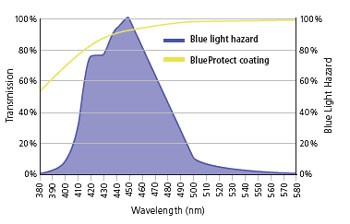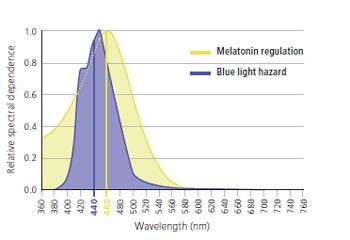DuraVision® BlueProtect by ZEISS
The ZEISS Blue-Violet Light Blocking Solutions.
 |
DuraVision® BlueProtect by ZEISS is a coating specially developed for people who spend a lot of their time indoors and are exposed to blue-violet light from LEDs as well as TV, computer or tablet screens. |
|---|
In addition, DuraVision® BlueProtect comes with premium features of ZEISS coatings.
| DuraVision® BlueProtect | BPI 15 | Superior Hardness Easy Care* | Easy Care* |
|---|
On clear material versions, PhotoFusion® and Transitions®**: 1.5/1.53/1.59/1.60/1.67/1.74
* Easy Care function: easy-to-clean, anti-static and scratch-resistant properties
**Transition is a registered trademark of Transitions Optical, Inc.
DuraVision® BlueProtect - the solution for indoor activities
 |
DuraVision BlueProtect This ZEISS coating reduces the transmission in the spectrum of 380–455 nm (blue light hazard) to a BPI 15 while keeping the high transmission level above 460 nm. |
|---|
Our exposure to blue-violet light may not always be the same. However, we must always enjoy comfortable vision.
 |
Blue-violet light is everywhere, although its intensity varies greatly. |
|---|
The two sides of blue-violet light*:
 |
Filtering blue-violet light at 440 nm and below should have minor impact on our circadian rhythm (the body’s day-night rhythm), while providing beneficial protection from potential phototoxicity. |
|---|
Pro |
Contra |
|---|---|
Regulates circadian rhythm (day-night rhythm) |
Increases risk of macular degeneration |
Requirements in terms of blue-violet light blocking.
Exposure to harmful blue-violet light varies greatly indoors and outdoors. It is important to have adequate blocking of the blue-violet light depending on its intensity.
